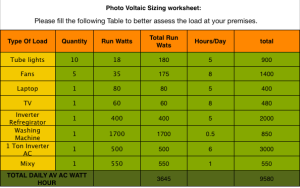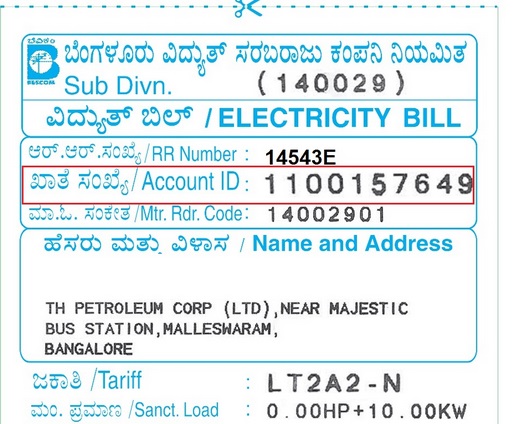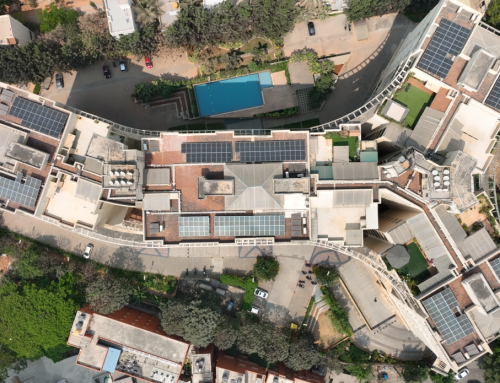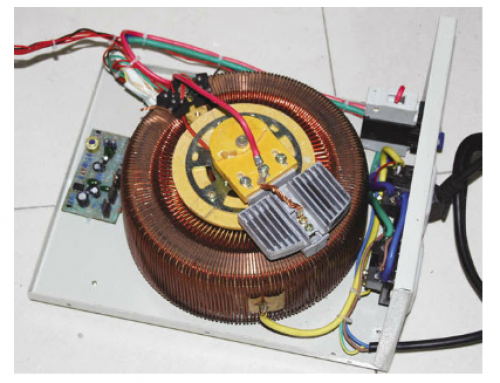Once you decide to go for solar installation on your rooftop, you would need to decide the type of solar rooftop PV system that you want to install. It could be off-grid roof-top or an on-grid solar rooftop PV solar system. For more details on off-grid and on-grid, please refer http://ecosoch.com/power/
For a standalone off-grid solar system, load energy consumption is a critical parameter in designing a PV System required. It’s compulsory that we do accurate load assessment so as to design the exact size and number of solar panels, battery and inverter.
If it’s on-grid solar system, PV systems may be designed to satisfy a portion of existing site electricity loads. For these type of systems, the limiting factor is going to be the shade free south facing rooftop area available to mount solar panels.
If its an existing building, one way to assess Energy Requirements of a building is to look at it’s electricity bill and get the number of Units of Energy Consumption during a month and divide it by number of days in a month to get your per day’s consumption. This gives the total energy consumption.
But what exactly are Power, Energy and a Unit (measured in kWh)? An understanding of power and energy fundamentals is essential for better assessment of your PV system requirements.
Energy (Wh) = Avg Power (W) x time (hr)
[/info] What you see in your bill is total no of kWh of energy consumed during a particular period (a month). A unit consumed in a electric bill is nothing but total number of kWh.While a Electricity bill can only give you a avg energy consumed during a day, it still doesn’t tell us your peak power requirement. A peak power requirement is the amount of total power consumed at an instant of time when all your lights, fans, TVs, Pumps, Motors are turned on.
For example if you have 5 Tube Lights in your house and Each Tube Light consumes around 20W. Then your total power consumption or Load is 20 x 5 = 100W. This becomes your peak load. If these lights are on for 10 hours in a day, then your total energy consumption becomes 100 W x 10 hr = 1000 Whr or 1kWh
A Typical Load assessment sheet would look something like this: 
You can download a typical assessment sheet from here PV System Sizing Sheet.
EcoSoch will help you assess the Loads and can do a free load assessment and Site Survey if required. Please http://ecosoch.com/home/contactus/







Leave A Comment
You must be logged in to post a comment.